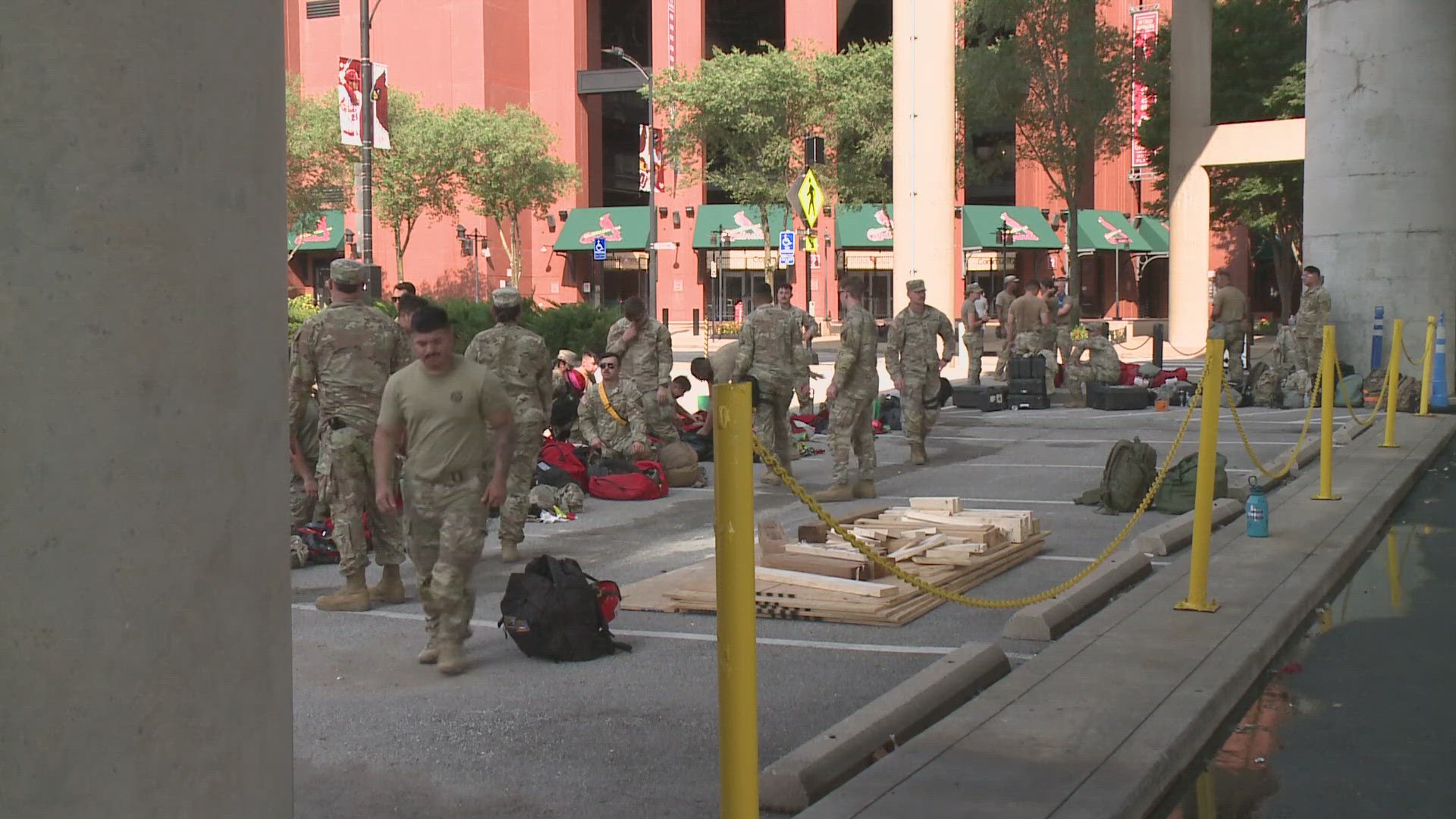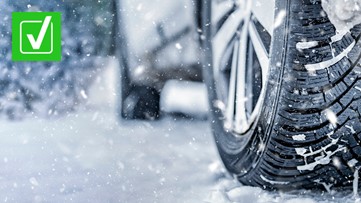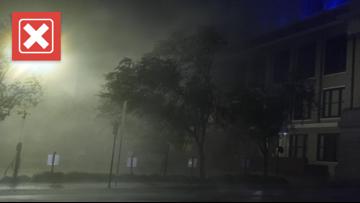NEW MADRID, Mo. — After a series of recent National Guard drills in downtown St. Louis, countless amateur seismologists seemingly appeared out of nowhere overnight.
Millions of people have since watched numerous videos online that took the drills as a cue to share disastrous predictions about a future earthquake in Missouri's New Madrid Seismic Zone. The videos claim seismologists predict a coming catastrophic earthquake to happen in the next 50 years; a quake that would split the country in half, put the Midwest underwater and cause damage to nearly half the country.
"The ocean would basically open up, and then all of the middle of the U.S. would be water," said TikTok account Nick Jackson, whose own video has been viewed 1.3 million times in three days.
The claims have also been bolstered by a recent trailer for the straight-to-streaming movie "Continental Split," which shows a disastrous earthquake destroying downtown St. Louis, including the Gateway Arch crumbling in on itself.
Are these predictions accurate, or are they another example of the long history of baseless panic surrounding New Madrid? We dug into the facts to VERIFY.
The question:
Is an earthquake capable of splitting the country in half expected to hit the New Madrid Seismic Zone in the next 50 years?
Our sources:
- United States Geological Survey (USGS) Earthquake Hazards Program Coordinator Tom Pratt
- Missouri Department of Natural Resources
- U.S. Department of the Interior
- Google Reverse Image Search
The answer:

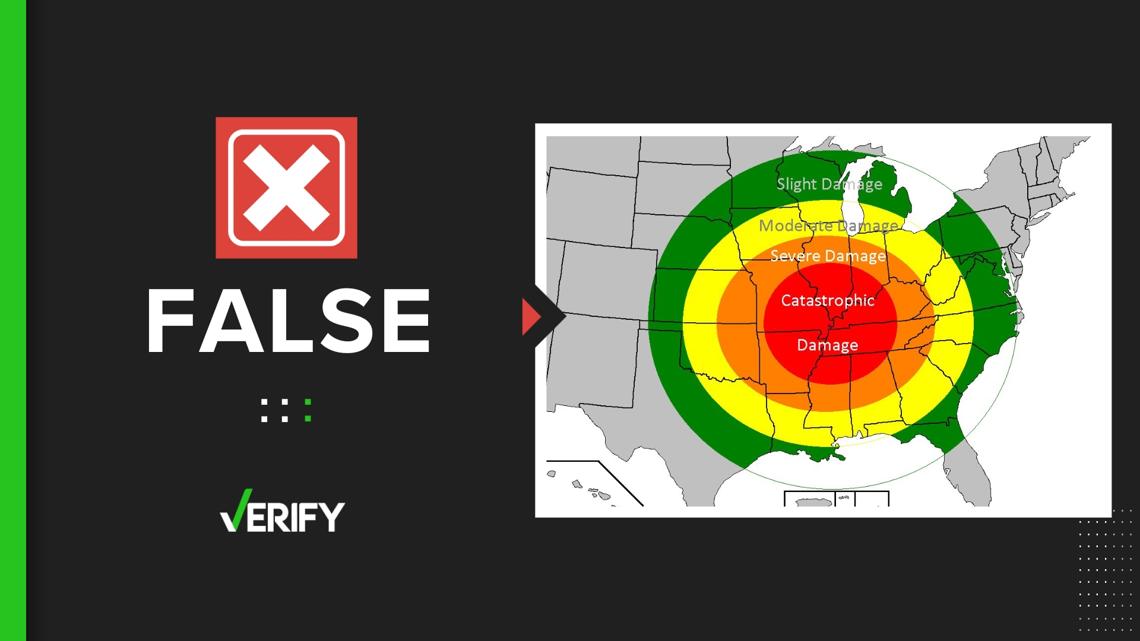
No, an earthquake with the intensity to split the country in half won't happen. Seismologists do warn a severe earthquake at the seismic zone is inevitable, but it won't be to the scale of international disaster.
The truth about the New Madrid Seismic Zone:
The New Madrid Seismic Zone is a series of faults, or fractures between two blocks of rocks, that run up and down the Mississippi River Valley that have had ongoing seismic activity for centuries. The zone has experienced at least three large earthquakes since recorded history, Pratt said. One near the year 900, one around 1500 and the most recent in 1811.
The zone has long been the focus of many theories and predictions, but unlike numerous other seismic zones in the eastern area of the country, the New Madrid zone has been active recently. A similar false theory spread by a man named Iben Browning in 1990 caused chaos in the town of New Madrid, which was overwhelmed by numerous TV crews. The prediction never came true.
The embarrassing moment caused many to understand a simple fact about earthquakes: They can't be predicted.
"As far as we know, there's probably going to be more large earthquakes in the future, but we don't know when because there's no way we can predict earthquakes," Pratt said. "The time in between large earthquakes tends to be about 500 years or so, but that doesn't mean large earthquakes or smaller ones couldn't happen tomorrow."
Seismologists can forecast the probability of an earthquake over the next 50 years, based on historical trends of previous earthquakes, but they can't predict exactly when they will happen. For instance, Pratt said current estimates for the New Madrid Seismic Zone forecast a 25-40% chance of a magnitude six or greater earthquake in the next 50 years and a 7-10% chance of a magnitude seven or greater in the same period.
The recent baseless theories and predictions began after the National Guard specified that they were preparing their drills to meet the scenario of an 8.4 magnitude earthquake. A quake of that magnitude is much higher than what Pratt would expect to ever hit in the area.
"A magnitude seven and a half, high sevens is the worst we'd expect (from New Madrid)," Pratt said. "There's a rough rule of thumb that for every magnitude seven earthquake, there are about 10 magnitude six earthquakes. For every magnitude six, there are about 10 magnitude five earthquakes, and so on ... but kudos to the National Guard. They're in charge of protecting us and they routinely exercise because when there is an earthquake, and they're inevitable, they need to be ready."
Even if another 7.5 magnitude earthquake hits the zone, the max magnitude Pratt expects to come from the zone anytime soon, history shows St. Louis may not be at a high risk of damage. The multiple earthquakes in 1812 that destroyed New Madrid are estimated to have been between 7.5 and 7.7 magnitude, and only resulted in some structural damage in St. Louis, the most severe of which was several chimneys falling over.
Another fault of the recent social media trend is that the image consistently shared in the viral videos also overblows the extent of the damage from a large earthquake happening in the New Madrid Seismic Zone. The image is a map of the U.S. with a giant red dot centered in southern Missouri. The image reportedly shows the damage radius of a catastrophic earthquake if it happened in the New Madrid Seismic Zone.
The map, like most things said by armchair seismologists, has no basis in reality. A reverse image search of the map reveals that its original source is a "Hypothetical Events Wikipedia" article about a fictional 2018 New Madrid Earthquake.
The real maps of a possible big New Madrid earthquake from the USGS are a lot less worrying.
The image on the left shows the chance of a slight or greater damaging earthquake shaking in 100 years, with blue being the least likely and dark red being the most likely. The image on the right is the USGS' earthquake hazard map, which shows the areas that will see the highest risk for geologic hazards that are capable of causing loss or damage. The hazard map is used to improve earthquake-resilient construction in the United States.

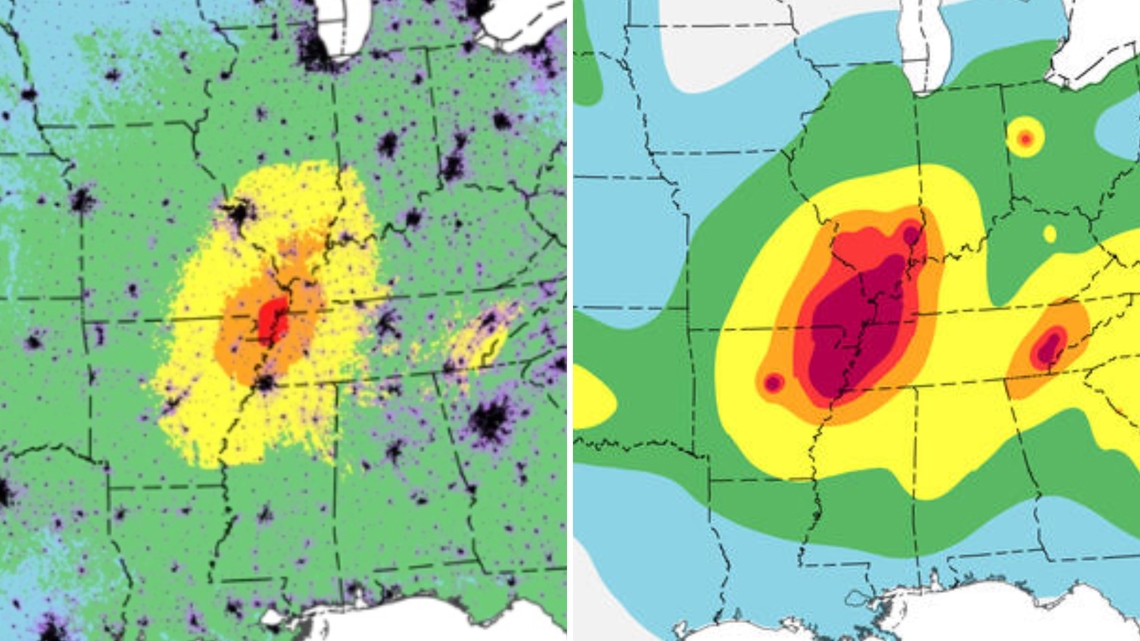
Even though recent social media posts have overblown the scale of the damage a large New Madrid earthquake could produce, Pratt wanted to clarify that a destructive earthquake in the New Madrid zone is a matter of when, not if.
"There will be large earthquakes on the New Madrid Seismic Zone, and the most likely one is a magnitude six or so, which would be a pretty damaging one on its own," Pratt said. "Use this information and this attention right now to make sure you've got a family plan, make sure you have emergency supplies on hand, and think about what you would do in an earthquake."
